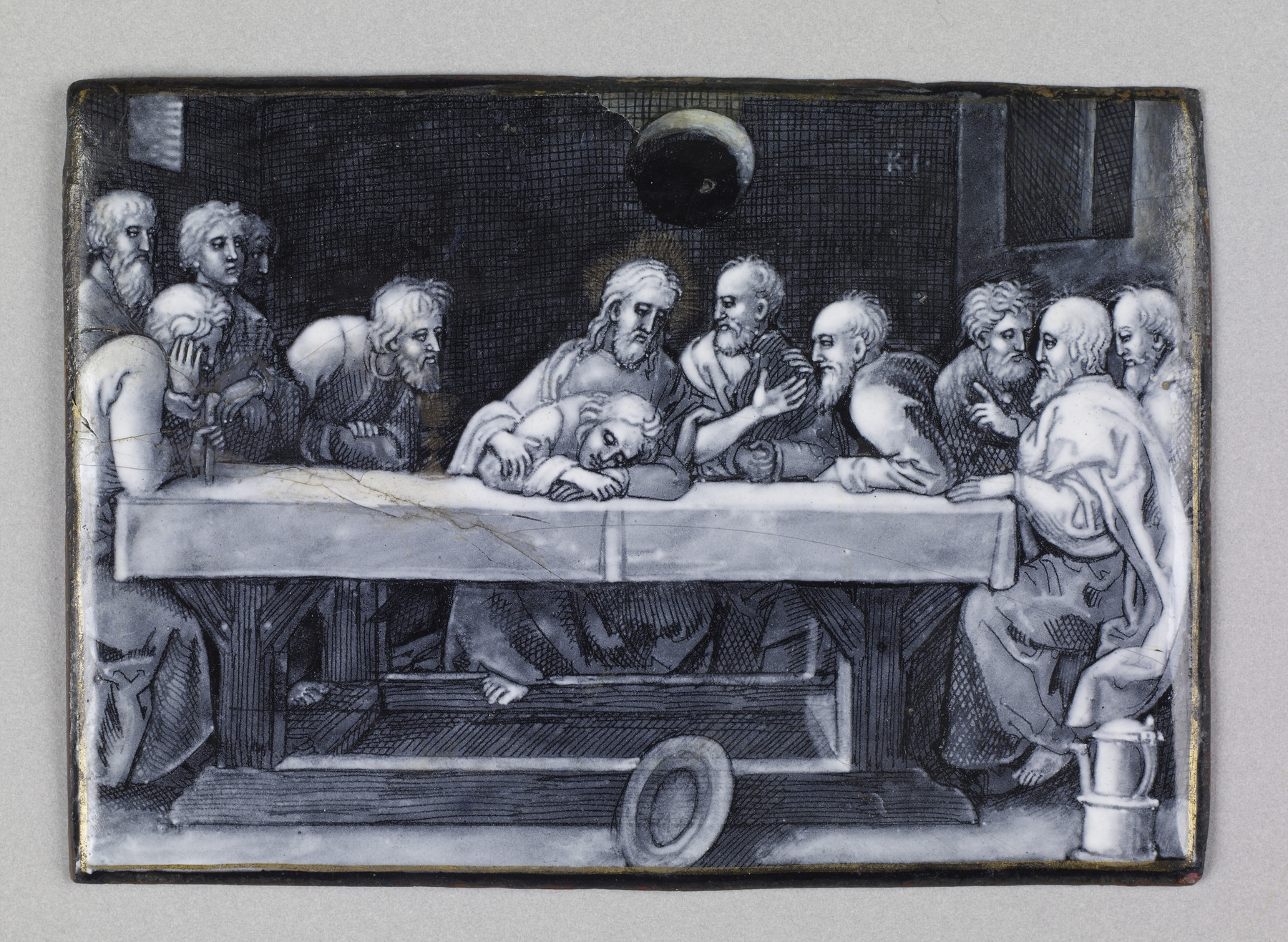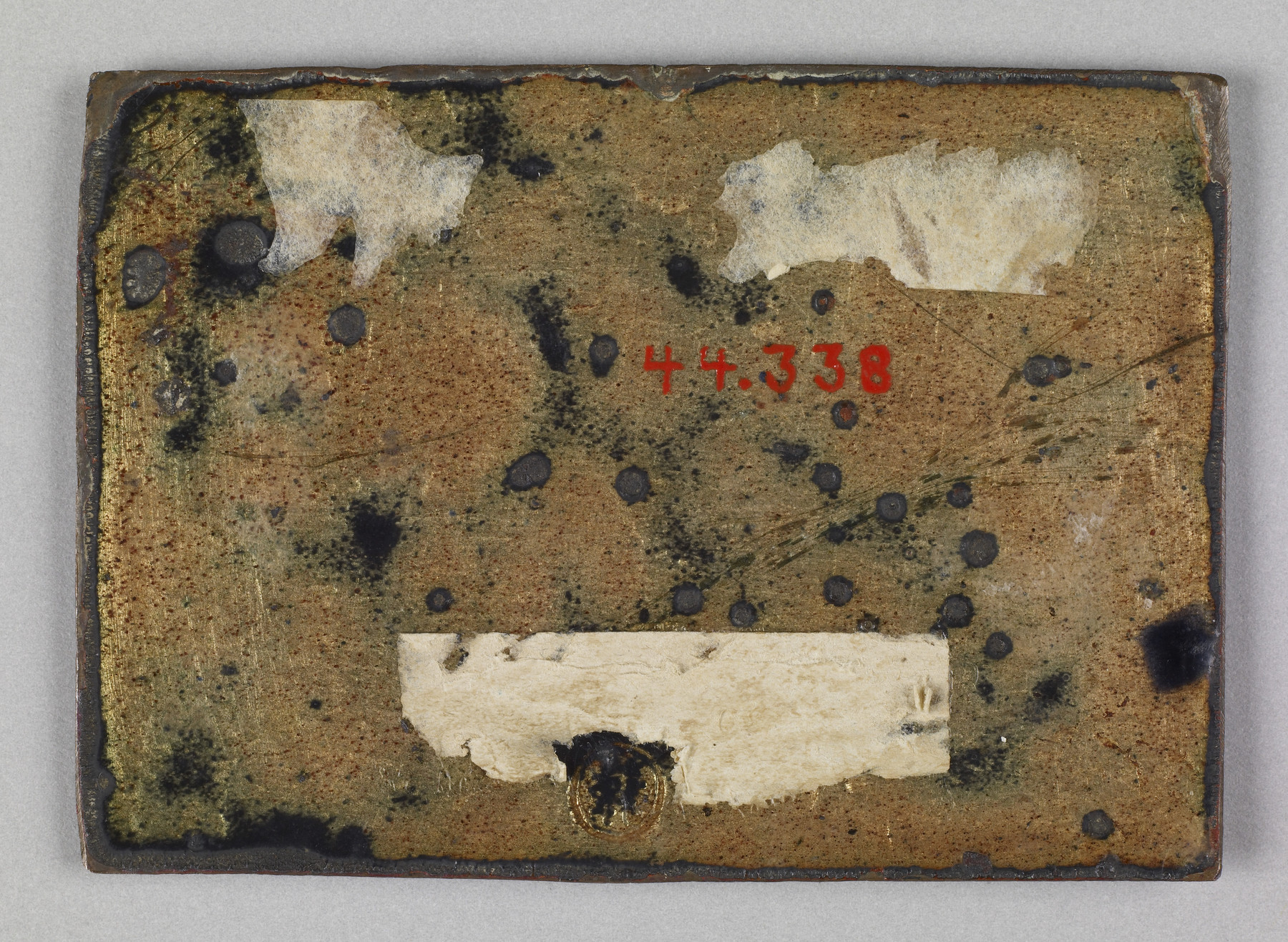The Last Supper
(Renaissance Europe )
Christ and the eleven apostles -Judas having departed- are seated along one side and at the ends of a wooden table covered with a cloth. In the foreground there are a wine-pot and a salver on edge. Behind the group the wall is pierced with a bull's-eye window and there are square windows on the side walls.
This Last Supper should more properly be called the Giving of the New Commandment, as it copies a woodcut executed by Albrecht Dürer in 1523 (B. VII, 53) under the influence of two publications of Martin Luther. These are "The Sermon of the New Testament, that is on Holy Mass," (1520) and the "Formula of the Mass," (1523). The moment referred to is when, after Judas had left, Christ gave to the eleven apostles the new commandment: "...that you love one another as I loved you," (John 15:12). Dürer's woodcut is the first known work of art alluding to a Lutheran Holy Communion service. Dürer included a representation of the chalice on the table to emphasize the communion of the congregation with wine; the enameller has avoided this detail.
Provenance
Provenance (from the French provenir, 'to come from/forth') is the chronology of the ownership, custody, or location of a historical object. Learn more about provenance at the Walters.
Frédéric Spitzer, Paris, [date of acquisition unknown] by purchase; Sale, Paul Chevallier and Charles Mannheim, Paris, April 17, 1893, no. 440; Charles Borradaile, Brighton [date of acquisition unknown], by purchase; Borradaile Sale, II, no. 24; George Robinson Harding, London [date of acquisition unknown], by purchase; Henry Walters, Baltimore, 1902, by purchase; Walters Art Museum, 1931, by bequest.
Exhibitions
| 2017 | Uncertain Times: Martin Luther's Remedies for the Soul. The Walters Art Museum, Baltimore. |
| 1897 | Burlington Fine Arts Club, 1897. Burlington Fine Arts Club, London. |
Conservation
| Date | Description | Narrative |
|---|---|---|
| 2/18/2017 | Examination | cleaned; examined for exhibition |
| 3/28/2017 | Treatment | coated; varnish removed or reduced |
Geographies
France, Limoges (Place of Origin)
Measurements
H: 3 1/8 × W: 2 3/16 in. (8 × 5.5 cm)
Credit Line
Acquired by Henry Walters, 1902
Location in Museum
Not on view
Accession Number
In libraries, galleries, museums, and archives, an accession number is a unique identifier assigned to each object in the collection.
In libraries, galleries, museums, and archives, an accession number is a unique identifier assigned to each object in the collection.
44.338






